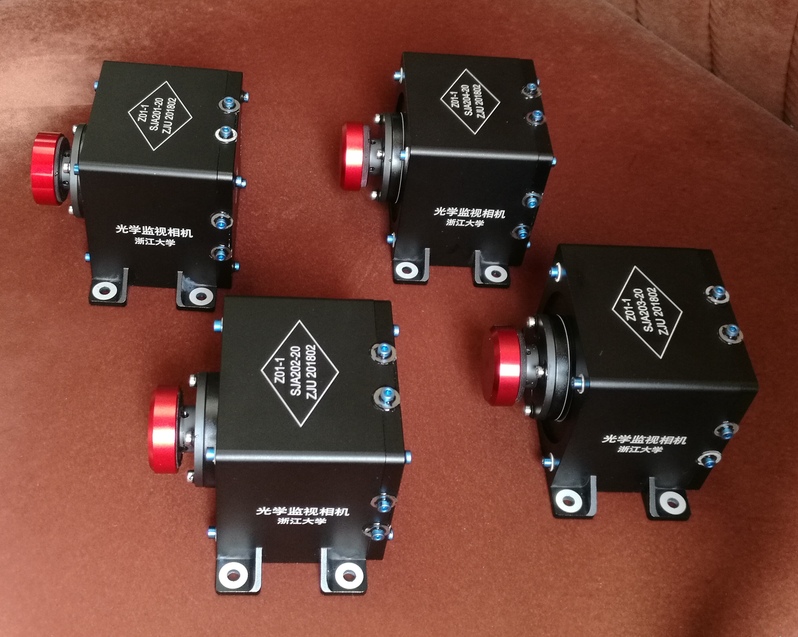China's biggest and most powerful carrier rocket, the Long March 5, kicked off its latest space mission from the Wenchang Satellite Launch Center, Hainan Province, at 20:45 on December 27, 2019.
During this liftoff, the Shijian-20 communications satellite successfully separated from the upper stage and entered geostationary transfer orbit 40 minutes later. The near 8-metric-ton Shijian-20 is based on the new large DFH-5 satellite bus. It will test Q/V band and laser communications.

To facilitate the observation and monitoring of motion devices, this satellite is loaded with 4 optical cameras which are developed by XU Zhihai's team from Zhejiang University. They will capture optical images of satellite facades in the four directions in space.
"They can monitor the unfolding process of the cross-shaped solar wing and the three-layered communication antenna and observe the operation process of the mechanical arm," said XU Zhihai, "In the past, researchers only relyed on telemetry signals to judge whether the solar wing and the communications antenna were operating smoothly and normally. The optical monitoring camera, however, enables technicians to observe and monitor the working state of each moving component on the satellite in a more tangible and convenient way."
"It is of immense significance to realizing the visualization of the on-orbit test of the space innovation technology, improving the designing and manufacturing of satellite-mounted components, and boosting the technical capacity of China's satellite system," added XU Zhihai.
The communications satellite platform requires that the camera should be exceptionally reliable. Xu Zhihai's team used a wide range of cutting-edge technologies, including anti-radiation glass, titanium alloy lensbarrels and permeability in the design and development of the camera, and applied triple-mode redundancy technology in core control software and hardware of the imaging circuit so as to prevent possible single-particle effects in space.
A certain number of high-energy particles fly at top speed in space. The atmosphere can protect the earth from the intrusion of these particles. However, in the geosynchronous orbit 36,000 kilometers from the ground, if high-energy particles hit the camera's control chip, the binary code in the memory will be changed from 0 to 1 or from 1 to 0. In this case, the camera will fail to work due to the error of the control program.
In addition, the space environment is teeming with various kinds of radiation, so the lens of the camera should be made of radiation-proof glass. Its lens barrel is made of titanium alloy, which is a light weight metal material with remarkable strength and rigidity, and its thermal expansion rate is similar to that of glass, thus ensuring high-definition images even in the extreme space environment.
Because the lens is filled of air when assembled on the ground, it will cause distortion, deteriorating quality and even destruction in the vacuum in space. To this end, XU Zhihai's team designed special vent holes on the lens to balance the internal and external air pressure, thereby ensuring reliability.
About Long March 5
This 57-meter-long rocket is the tallest, strongest and most technologically sophisticated in China's launch vehicle family. It is capable of delivering 14 metric tons to geostationary transfer orbit and the derivative Long March 5B will be able to deliver 25 tons to low Earth orbit. The carrier rocket will be tasked with launching China's first Mars probe and sending the Chang'e-5 lunar probe to the moon to bring lunar samples back to Earth.






